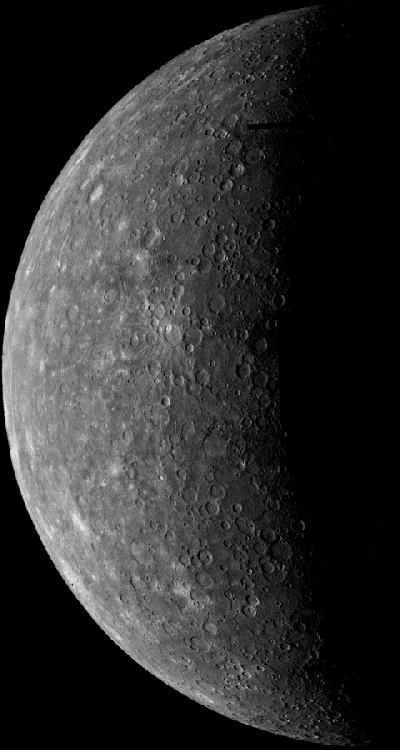About 4 billion years ago, the inner solar system was an inhospitable place. Incredible numbers of large objects pounded the terrestrial planets — including Earth and the Moon — during a period of some 100 million years. Although this is a brief amount of time in geologic terms, this pounding, which astronomers call the Late Heavy Bombardment, left permanent scars — craters on the Moon, Mars, and Mercury. But why was the Late Heavy Bombardment so intense? Where did the meteoroids and asteroids come from? A team of astronomers may supply some answers in a paper published in the journal Science (September 16, 2005).
Researchers Robert Strom, Renu Malhotra, and David Kring at the University of Arizona and their Japanese colleagues Takashi Ito and Fumi Yoshida formulated a picture of the Late Heavy Bombardment by first looking at available data concerning ancient impactors. “We were looking at the fingerprints of the event — the data — and worried about explaining it later,” Kring told Astronomy. It was these geochemical and geophysical fingerprints that pointed them to the source of material for the bombardment, a place unexpected by some astronomers.
However, when the Arizona and Japanese astronomers derived the size distribution of the impactors from the cratering record left on the Moon and elsewhere, it did not match that of the current Kuiper Belt population. It matched — almost exactly — the size distribution of objects in the asteroid belt located between Mars and Jupiter. “[It was] an astonishing fit,” said Strom.
Kring points out this is not too surprising because the size distribution of objects producing craters on the icy moons of Saturn and other outer planets is different from that on the Moon, Mercury, and Mars. The reason is simple: Objects from the Kuiper Belt, not the asteroid belt, hit these icy moons.
The team’s geochemical analyses of the abundances of elements found in lunar material — iridium, gold, and germanium, in particular — indicate the lunar impactors possessed a composition similar to the asteroid belt. The evidence points to less than 15 percent of the Late Heavy Bombardment impactors originating in the Kuiper Belt.
Malhotra has an answer for the “why” of the Late Heavy Bombardment. She argues the giant planets’ migration, particularly Jupiter’s inward migration, caused gravitational resonances to sweep across the asteroid belt, disrupting orbits and flinging asteroids toward the inner planets. The devastation on Earth was severe — an estimated 20,000 asteroid impacts would have vaporized any primeval oceans and pulverized the surface. This event, however, had a positive consequence — it created subsurface hydrothermal systems, which some think are critical to the origin of life.
The Late Heavy Bombardment was the last great cratering period in solar-system history. Once the giant planets reached their current positions, the bombardment ended and impacts on planets in the inner solar system became infrequent events. This stability ultimately allowed life to develop and evolve on Earth.










